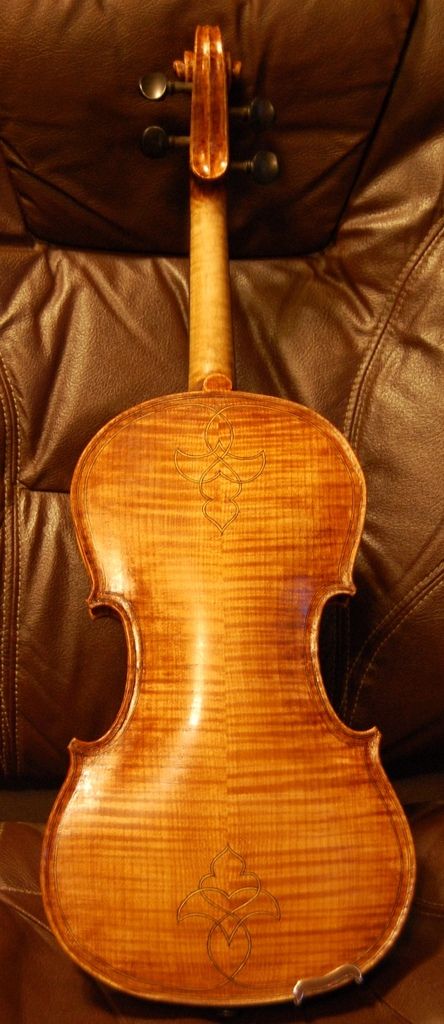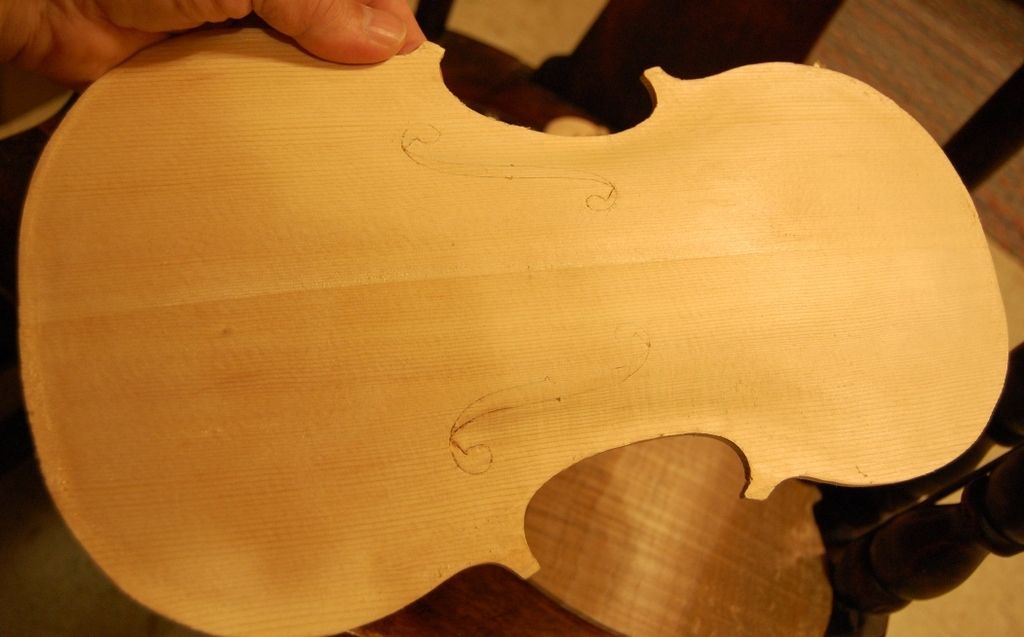Current and New Projects
A Double Bass
That Double Bass I began (quite some time ago) has sat in the corner of my shop, sneering at me every time I look that way. That has to stop…but the only way to stop it is to finish the project. (sigh…)
One of the things that was holding me back is that my old home-made bending iron simply wasn’t good enough. So, the first step toward completion is to make a new, hotter, smaller diameter bending iron. The old one was heated with a propane torch, but it was quite large, and it took a long time to get it barely hot enough to function. This one will have an electric element for heat, and much smaller diameter, as well as much less mass. I hope it works well. Another maker shared how he made his bending iron, and I am attempting to emulate his example. If that works, I can get moving and complete the bass this fall.
Another Cello
A few years ago, I had salvaged some curly Big Leaf maple from a very large tree that was being removed from my wife’s childhood home. I promised I would build her a cello from the wood, so she would have a treasure from her childhood. So, the wood is fully dry and seasoned, now, having sat out in my shop for several years. It has humidity-cycled through the changing seasons, and should be quite stable, now. A friend (Steve Stevens, now deceased) had given me a cello top set of Red Spruce, so that will go into the mix as well, making it a treasure to both of us.
What I hope to do, is to give special attention to getting good pictures of every step of the construction and finishing of this cello, so as to post a running commentary and tutorial as I work. On every project thus far, I have had a tendency to get engrossed in the work and forget all about pictures. So, I may recruit Ann to take the pictures, so that I can keep rolling.
A Large Viola…or maybe a Viola da Spalla
I haven’t decided just how large, yet…the largest violas I have made in the past have been 16-1/2″ on the body, which is pretty good sized, and already too big for some folks. But I am considering either a 17″ (or larger) viola, or a “Viola da Spalla”, sometimes called a violoncello da spalla, or a small Violoncello piccolo. The Viola da spalla is played off the right shoulder, so that the chin is over the bass lower bout, but not on a chinrest. A strap holds the instrument up under the player’s chin, and the bowing hand reaches up from beneath, to access the strings. Frequently they are made as a five-string cello, and that is how I would approach it. Tuning, then, is in the same range as a cello, but adding one higher string: C, G, D, A, E.
Either way, I realize I am probably building something I will never be able to sell, as there isn’t much market for either instrument. (Ah, well… some things we do out of love.) Anyway, this one is not a very high priority.
Another Violin
The last violin I made received good reviews, but I can see things I could improve, so…I will probably make another one soon. (This lutherie stuff is addictive!)
Coming Soon
I hope to begin at least two of the projects soon, and begin posting photographs.
Thanks for looking.

 Follow
Follow

















